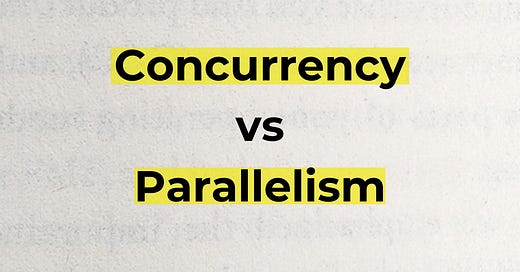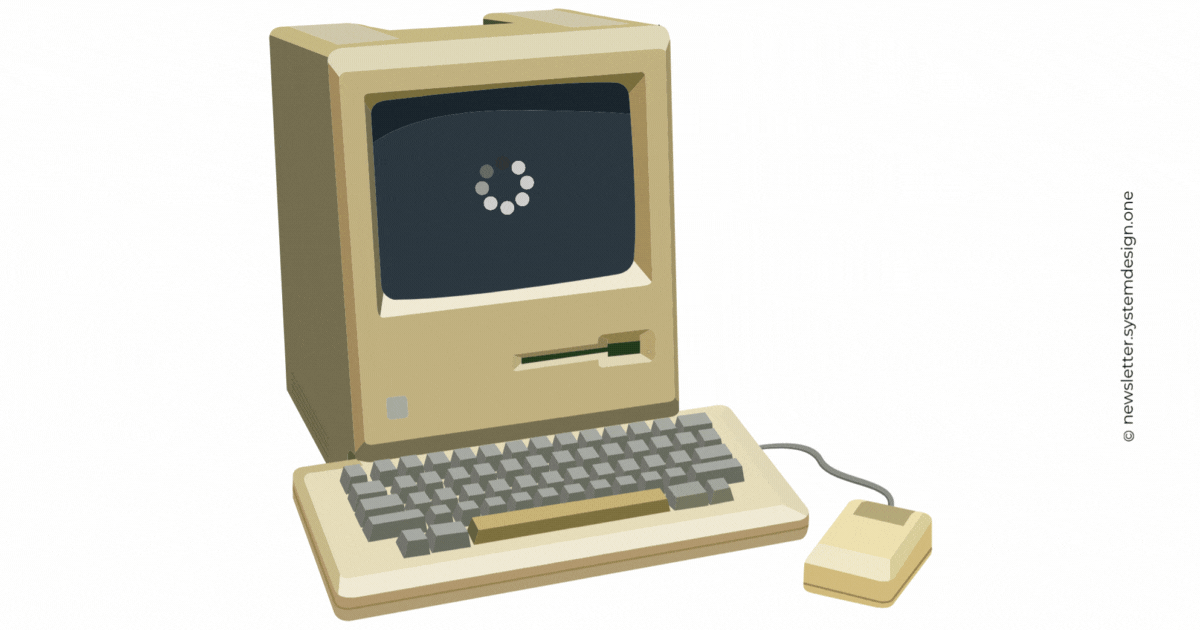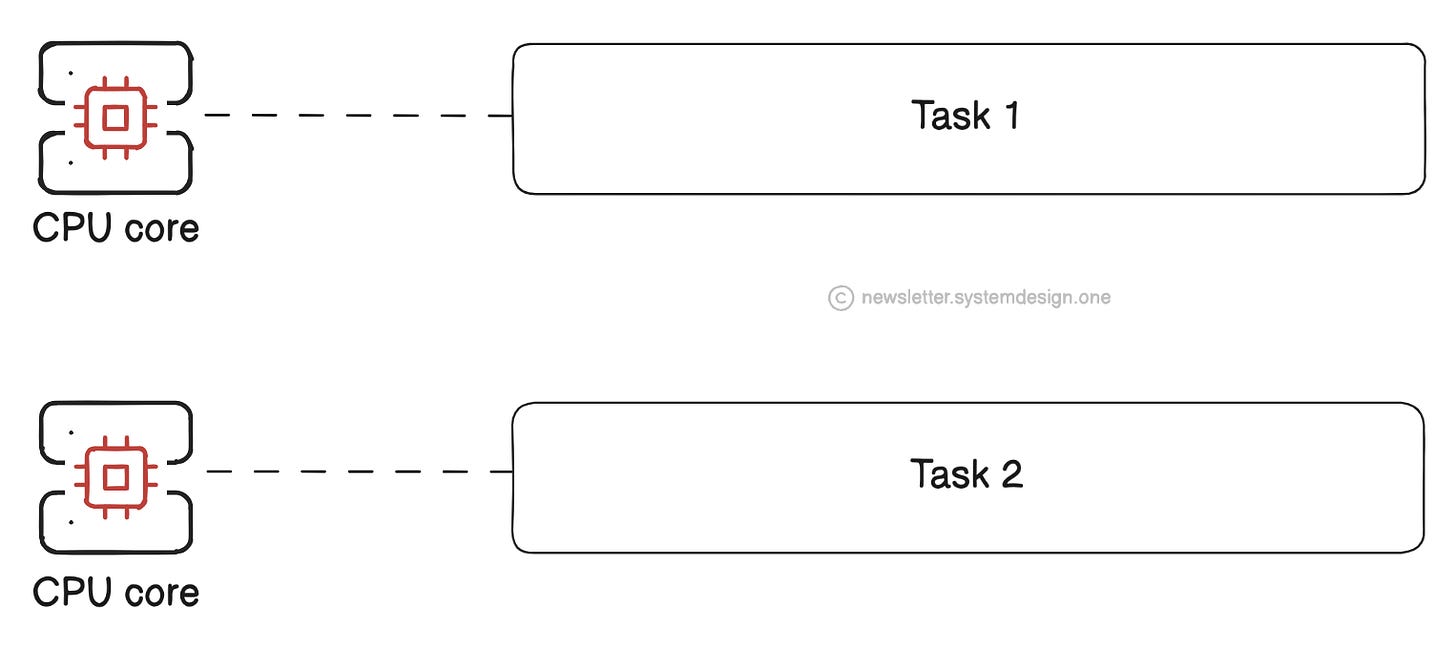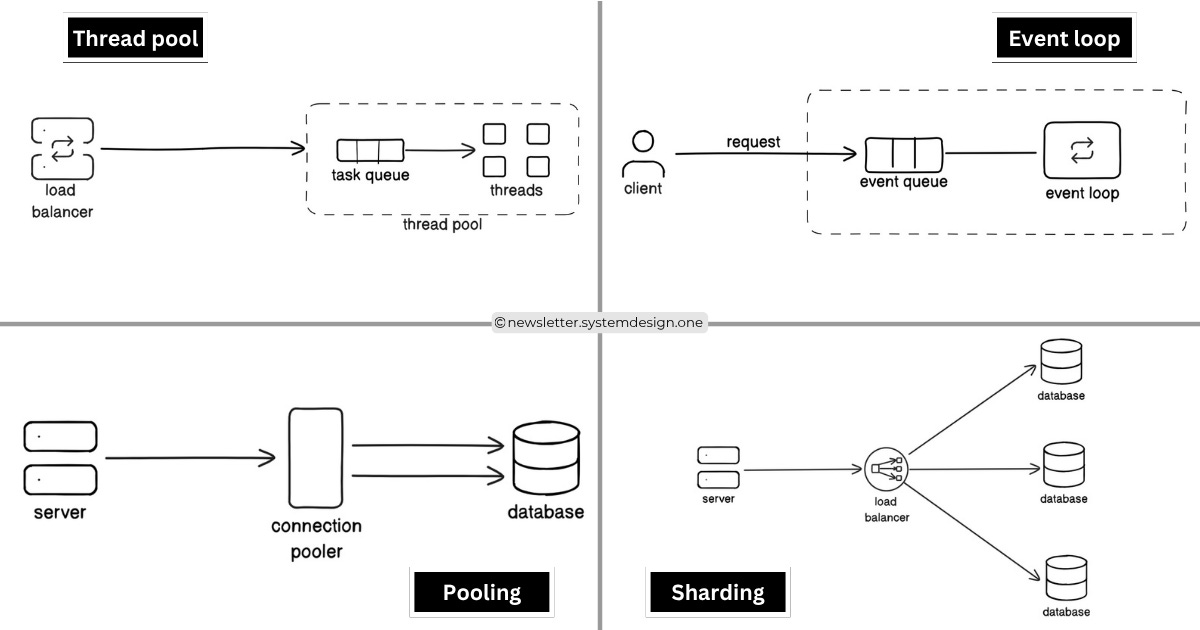Get my system design playbook for FREE on newsletter signup:
This post outlines the differences between concurrency and parallelism. You will find references at the bottom of this page if you want to go deeper.
Share this post & I'll send you some rewards for the referrals.
Once upon a time, computers had a single CPU and could run only one task at a time.
Still it completed tasks faster than humans.
Yet the system wasted CPU time waiting for input-output (I/O) responses, such as keyboard input.
And the system became slow and non-responsive as the number of tasks grew.
So they set up a scheduler and broke down each task into smaller parts.
The scheduler assigns a specific time for processing each task and then moves to another. Put simply, the CPU runs those micro tasks in an interleaved order.
The technique of switching between different tasks at once is called concurrency.
But concurrency only creates an illusion of parallel execution.
The performance worsens when the number of tasks increases. Because each task has to wait for its turn, causing an extra delay.
So they added extra CPU cores. And each CPU core could run a task independently.
Think of the CPU core as a processing unit within the CPU; it handles instructions.
The technique of handling many tasks at once is called parallelism. It offers efficiency.
Onward.
Cut Code Review Time and Bugs in Half — Sponsor
CodeRabbit is your AI-powered code review co-pilot.
It gives you instant, contextual feedback on every PR and one-click fix suggestions. It has reviewed over 10 million PRs and is used in 1 million repositories.
Besides, it’s free to use for open-source repos; 70K+ open-source projects already use it.
CodeRabbit lets you instantly spot:
Logic & syntax bugs
Security issues (XSS, SQL injection, CSRF)
Concurrency problems (deadlocks, race conditions)
Code smells & readability concerns
Best practice violations (SOLID, DRY, KISS)
Weak test coverage & performance bottlenecks
Write clean, secure, and performant code with CodeRabbit.
Concurrency Is Not Parallelism
Concurrency is about the design, while parallelism is about the execution model.
Let’s dive in:
1. Concurrency vs Parallelism
Imagine concurrency as a chef making doner kebab for 3 customers. He switches between fries, meat, and vegetables.
And consider parallelism as 3 chefs making doner kebab for 3 customers; all done at the same time.1
The CPU-intensive tasks run efficiently with parallelism.
Yet parallelism wastes CPU time when there are I/O heavy tasks.
Also running tasks on different CPUs doesn’t always speed them up. Because coordinating tasks for independent execution is necessary.
So combine concurrency with parallelism to build efficient, scalable, and responsive systems.
Besides simultaneous changes to the same data might corrupt it.
Yet it’s difficult to determine when a thread will get scheduled or which instructions it’ll run.
So it’s necessary to use synchronization techniques, such as locking.
Think of a thread as the smallest processing unit scheduled by the operating system.
A thread must acquire the lock to do a set of operations. While another thread can use the CPU only after the current thread releases the lock.
The 2 popular synchronization primitives are mutex and semaphore. They’re used to coordinate access to a shared resource.
A mutex allows only 1 thread to access the shared resource at a time. While semaphore limits the number of threads accessing a shared resource at a time.
Imagine the mutex as a single key to enter the building. And think of the semaphore as a bowl of keys to enter a building.
Besides programming languages, such as Go, allow to build concurrent and parallel solutions without explicit locking mechanisms.
Ready for the best part?
2. Use Cases
Here are some use cases of concurrency and parallelism in system design:
A client fetches data via asynchronous callbacks. While main thread handles user input to keep the UI responsive.
A load balancer uses non-blocking I/O or a thread pool to avoid connection queuing.
A server uses event-driven or multi-threading models to handle requests. Also many servers could be installed for parallelism.
A connection pooler allows clients to share a set of database connections. While queries get executed in parallel across those connections.
A sharded database allows clients to make parallel queries and then merge the responses. Besides the client could access and change data at once using database concurrency techniques.
Concurrency is not parallelism; instead, it’s a way of structuring tasks to enable parallelism. Thus making it easy to scale.
One should break down a problem into smaller, independent tasks for concurrency. Then compose the smaller tasks in parallel to solve the problem efficiently.
Remember, a system in which all tasks run in parallel and stay busy all the time has the maximum throughput.
Subscribe to get simplified case studies delivered straight to your inbox:
Want to advertise in this newsletter? 📰
If your company wants to reach a 150K+ tech audience, advertise with me.
Thank you for supporting this newsletter.
You are now 154,001+ readers strong, very close to 155k. Let’s try to get 155k readers by 25 June. Consider sharing this post with your friends and get rewards.
Y’all are the best.
TL;DR 🕰️
You can find a summary of this article here. Consider a repost if you find it helpful.
References
What is the difference between a lock, a mutex, and a semaphore?
Block diagrams created with Eraser



























Getting this distinction right makes a huge difference when designing scalable systems.
Solid breakdown, Neo.
My wife doing dinner = parallelism
Me doing dinner = concurrence in the worst implementation shape